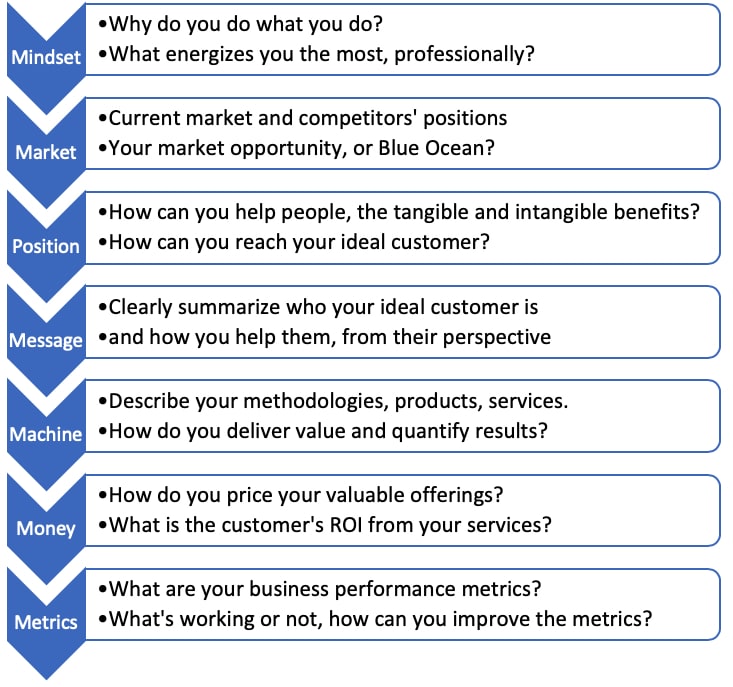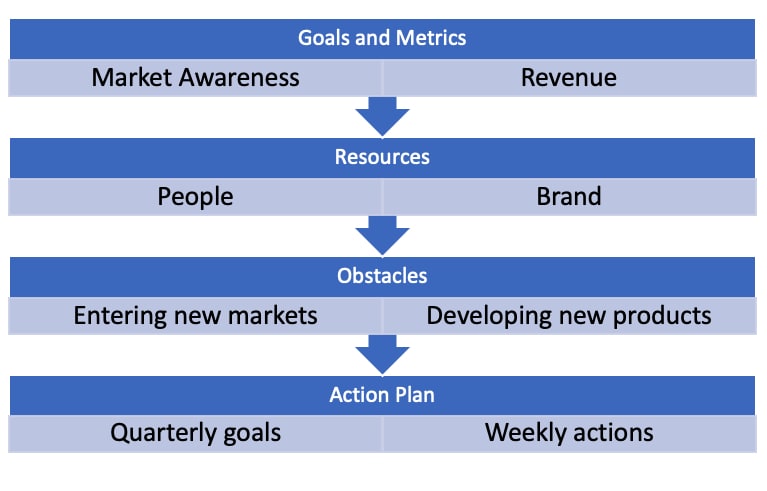This week, I gave a presentation on How To Grow Your Business to the Women Entrepreneurs of Saskatchewan, or WESK. Check out their website and benefits here.
One of the questions was about finding a framework to quickly develop a growth strategy.
Reading any book on strategy will take several hours and distilling that wisdom down to your business will take more hours. Most entrepreneurs don’t have that kind of time.
To help you, I’ve developed a Sixty Minute Strategy model to help small businesses, or business units of larger companies, to quickly develop a growth strategy.
First, my definition of strategy, with four parts:
The proactive and intentional application of your resources to create optimal and measurable value for your ideal customers.
Strategy is less about what you do or how you do it, although these are important parts. Strategy is about creating value, ideally measurable value, for your ideal customers.
Let’s assume you have talent, skill, and experience in a certain matter that people are willing to pay for…since it needs to generate revenue to be a real business. This model will help you to develop a strategy for a new business. It’s also highly relevant for reviewing your existing strategy, market position, and business performance.
Figure 53.1 Sixty Minute Growth Strategy Model.

Thinking is hard work. What’s more important is taking action and putting your thinking into motion. Thinking doesn’t generate customers and revenues, action does.
From the steps and questions above, you’ve created a (hopefully) one-page analysis of your potential strategy.
The next steps are to put your strategy into action:
- Formalize your goals and metrics of progress towards your goals.
- Identify resources such as people, skills, brand, knowledge, equipment, systems, website, brand, reputation, contacts, relationships, and energy that can help you achieve your goals.
- What are the potential obstacles and challenges and how can you overcome or mitigate them?
- Create an action plan with quarterly milestones and weekly actions to achieve your goals.
- Step on the gas, implement, learn what works, adjust when necessary, and keep working the plan.
Let’s assume your goals are to increase market awareness and to generate new or more revenue. The high-level structure of your plan might look like this. You need to fill in the details.
Figure 53.2 The Strategic Action Plan.

Taking action, failing fast, learning quickly, adjusting, and proceeding using the above frameworks will generate superior results compared to having a thoroughly researched 50-page business plan.
Entrepreneurs are not risk takers. They’re risk testers.
You will learn from every customer interaction. When you learn, you will grow your business and your wealth. Once you’ve generated this intelligence, then you can create the full business plan.

